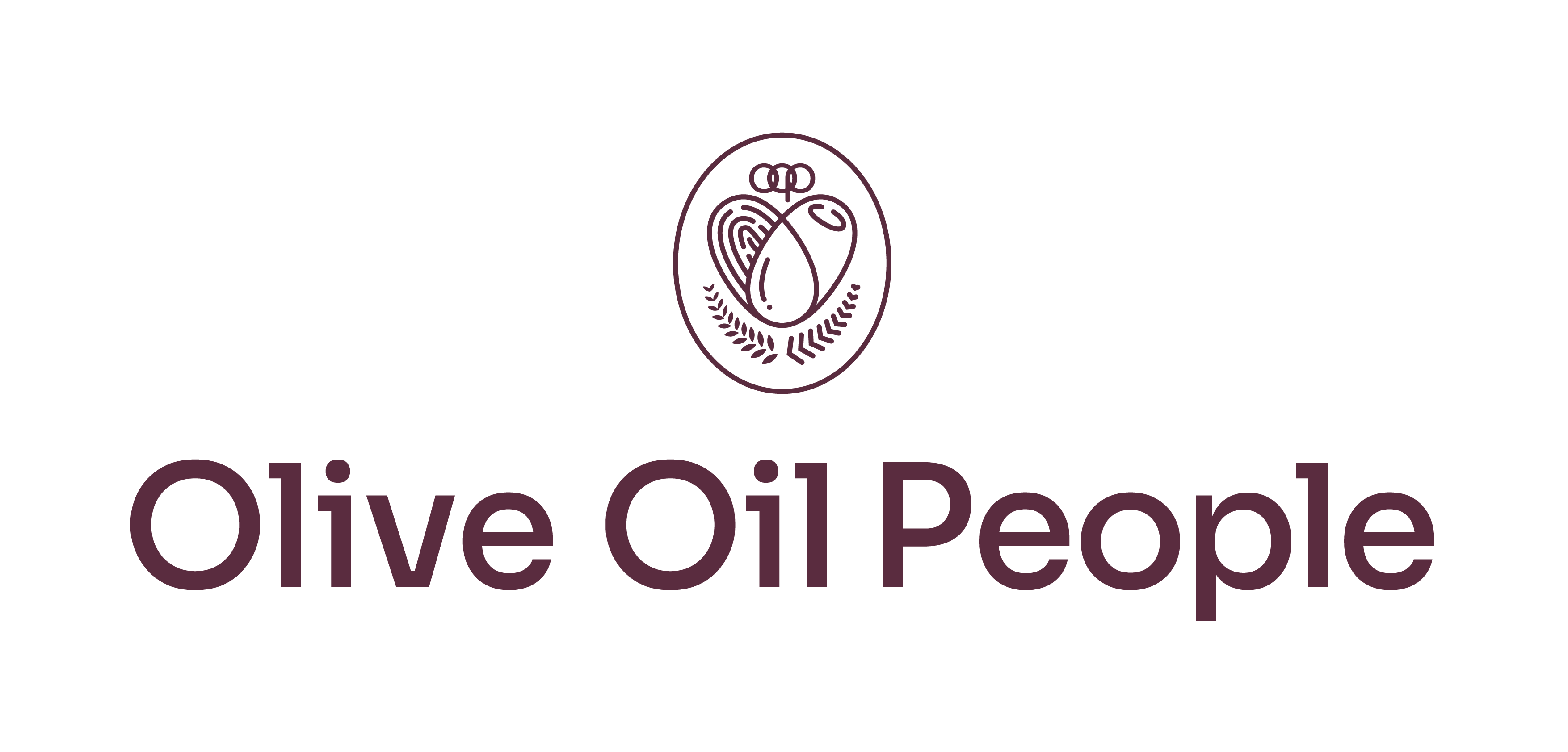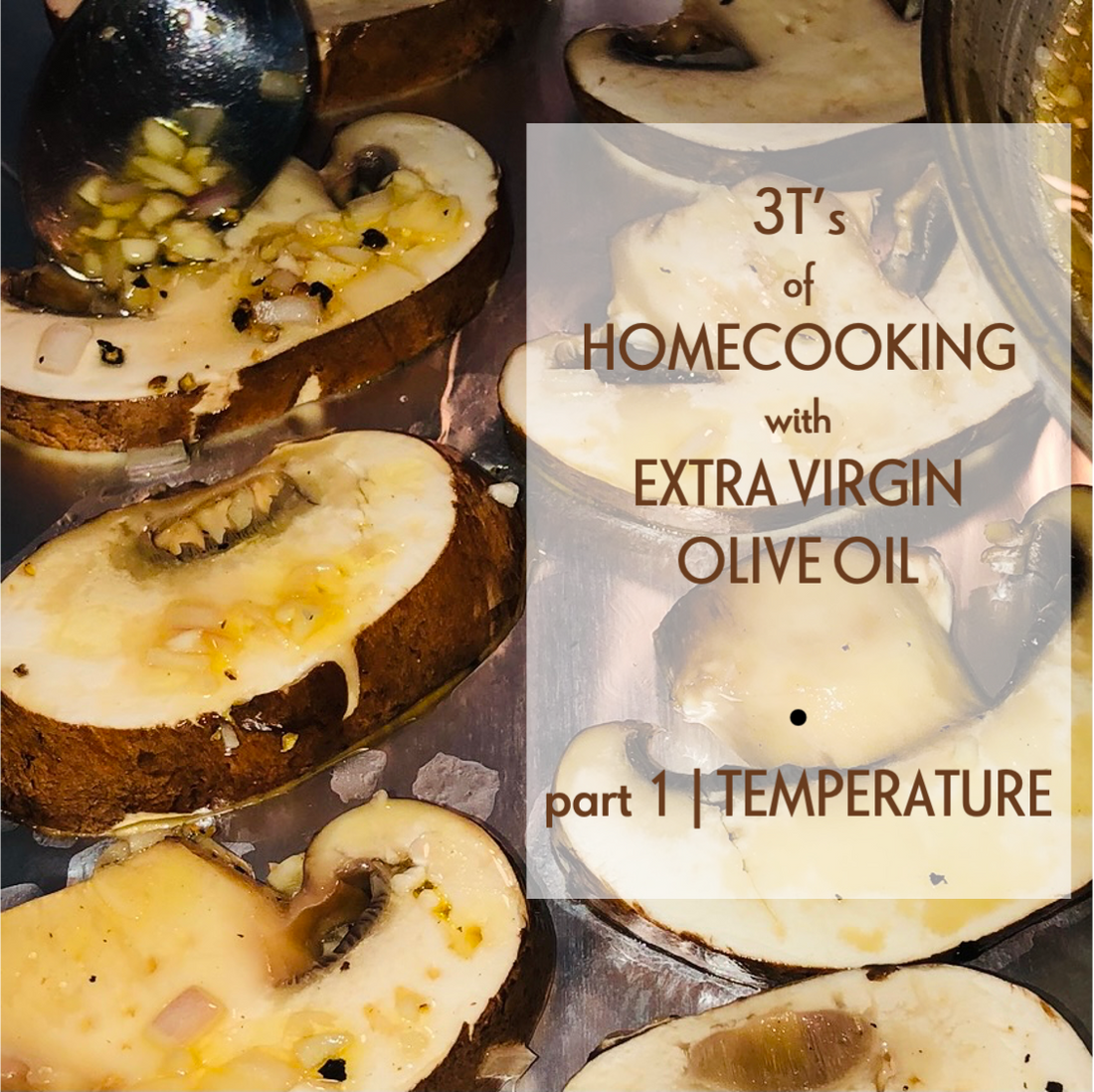Learn why extra virgin olive oil can be used for frying, even deep frying in part one of this blog series
In this three-part series blog post, we share with you Why and How you can maximize the health and taste benefits of cooking with extra virgin olive oil (EVOO). The series is divided into Temperature, Time and Taste. Within each part you will find research-based findings and some easy tips.
Last Updated: 24 June 2021 | Cooking/Culinary
Temperature
One of the benefits of homecooking is knowing exactly what goes into the preparation of our meals. The starting point of deciding what to cook often stems from the ingredients we have on hand, a craving for a particular taste or even the ease of cooking methods. Safe to say, it rarely starts with the type of oil or fat we want to use. However, it could serve us well nutrition and taste-wise, to be more deliberate about this indispensable, yet sometimes an after-thought of an ingredient.

Image and Instagram post by Olive Oil People
Singapore’s Healthy Plate Advocacy - Understanding Olive Oil’s Role
In 2014, Singapore’s Health Promotion Board launched My Healthy Plate using simple imageries to communicate dietary recommendations, replacing the ubiquitous health diet pyramid. During this campaign, two additions were made, apart from simplifying messaging – i) choose healthier oils and ii) be active. While “be active” is easier to embrace for its clarity, choosing healthier oils is a little more complex for reasons related to level of awareness of edible oils and factors that influence home cooking preferences (if home cooking is preferred, that is) which count among them culture, tradition and perceptions.
Olive oil is highlighted as an example of healthier oils which at first glance seems intuitive, yet the reasons why olive oil is healthy may not be fully understood. Likely in part due to the fact that consumption of olive oil has not been a big part of the Asian home cooking experience. Therefore, it is common to associate usage of olive oil only in its raw form for dipping breads and drizzling over salads. Still, many of us have eaten at restaurants serving Mediterranean cuisine where olive oil is often the main source of fats and in fact has been used for thousands of years in roasting, sautéing, stir-frying and yes, even deep-frying. Olive oil, especially extra virgin olive oil (EVOO) can play a bigger role in our kitchens or recipes once we understand its versatility and behaviors in cooking and health.
Temperature and Olive Oil
Essentially, there are two main reasons why we might want to note about temperature first and foremost when it comes to olive oil. Firstly, the internet is rife with conflicting information about cooking with olive oil and you are likely to have been advised not to use olive oil in high heat cooking because it has a low smoke point. However, this popular notion cannot be further from the truth as smoke point alone does not paint the whole picture.
Secondly, olive trees thrive only in specific climates in the world and the way we store olive oil in Singapore’s hot, humid and sunny climate has a bearing on how long olive oil can retain its full fresh flavours. Some simple steps will do the trick here.

Smoke point is not the whole story, heat stability is more telling for high-heat cooking
Smoke point, as we know, is the point once exceeded that causes the oil to burn (and smoke), makes our food taste bad and can be bad for our bodies. Vegetable oils such as canola, soybean, sunflower or corn oil have to go through a refining process to make them fit for human consumption, therefore would tend to have higher smoke points than EVOO. EVOO is the natural juice of the olive fruit simply pressed and bottled, giving us its inherent natural health properties. Additionally, EVOO contains primarily monounsaturated fatty acids which makes it different from other unsaturated oils.
Before we walk further down this well-trodden path, let’s ask ourselves two important questions. How hot exactly is high-heat in home cooking? How often do we really have bubbling cauldrons of hot oil on our stoves? Most stove top home frying happens at or below 180°C and most baking temperatures hover around +/- 200°C. EVOO has a smoke point range of 180-220°C (depending on variety) which makes it suitable for most cooking methods including many so-called high heat methods like frying. One thing to be aware of is that many studies of cooking oils stretch comparative specimens to their extremes much like say, the French fries’ section of a fast-food kitchen, where the deep fat fryer is constantly on. In fact, many of these studies were done to generate recommendations to the food service industry more so than for our domestic kitchens.
For health reasons, we are advised to reduce intake of saturated fats and to favour unsaturated ones. However, not all unsaturated fats are created equal as each type of oil contains varying ratios of polyunsaturated fatty acids (PUFA), monounsaturated fatty acids (MUFA) and saturated fatty acids. So how does one choose? Is high PUFA or high MUFA better? If you are choosing for health reasons, high MUFA with low PUFA and low saturated fats should be favoured because of a thing called oil degradation caused by thermal and oxidative stress, in other words how “heat-stable” the oil is. Heat stability is important because it indicates how much of the inherent health benefits of the oil is reduced in the cooking process.
Which Unsaturated Oil Has the Greatest Stability Against High Heat Degradation?
Oil degradation is the change in the oil’s total polar compounds, especially with increased toxic volatile aldehydes when put through conditions like frying. High PUFA oils like sunflower or corn oil are less stable when heated. Even within recommended lower PUFA oils such as extra virgin olive, canola or peanut oils there are differences in their heat stability. A study funded by non-governmental organizations and universities in Spain into oil degradation compared three low PUFA oils namely, EVOO, canola and peanut oils before and after frying, showed that EVOO has the greatest stability against oxidative, thermal degradation.

Image and Instagram post by Olive Oil People
Best to store your Extra Virgin Olive Oil with your wines in Singapore
It is common to keep oils handy for cooking by storing them close to the stove area. However, one thing to keep in mind is the constant heat, air and light exposure of an unsealed bottle of good EVOO would degrade and turn it rancid faster. Apart from not tasting as good, when EVOO starts to turn rancid, its molecular compounds change too and may affect its performance in the pan.
As EVOO comes from a naturally cooler climate, it is best stored (sealed or opened) in as close to its natural conditions as possible. This ensures you can enjoy its full benefits longer even beyond its best-by date. Just as olive trees thrive in the same soils and climates as vineyards, the best place to keep your EVOO fresh for longer is in a wine chiller or cellar typically set at 12-15°C. Note of caution: unlike wine, olive oil does not get better with age! The aim here is to keep the EVOO as fresh and flavourful as long as possible in wine storage conditions. If wine chiller space is a problem a cool, dark place works too plus using the bottle up faster and buying bottle sizes that suit your consumption patterns.
In a nutshell
Home cooking with EVOO even frying is not only safe but healthier than other vegetable oils because EVOO is unaltered in any way other than being pressed after the olive fruits are picked, which is unlike vegetable oils that must be refined to be fit for human consumption. Furthermore, we rarely cook above EVOO’s smoke point of 180-220°C and being high in monounsaturated fatty acids (MUFA), EVOO is much more stable against oxidative, thermal stress i.e., oil degradation even when compared to other lower polyunsaturated (PUFA) oils like canola or peanut.
To keep EVOO fresher for longer, it is highly advisable to store sealed and opened bottles in wine cellar conditions, especially in Singapore where heat, humidity and light is abundant causing oils to degrade faster.
Look out for Part 2 of this three-part series blog post by following us on Instagram (@oliveoilpeople) when we announce.
Author's note:
our blog posts are not meant to replace your physician’s advice. However, we do cross-reference facts and data points with expert sources, observations and research publications, where available. All photos by Olive Oil People.

